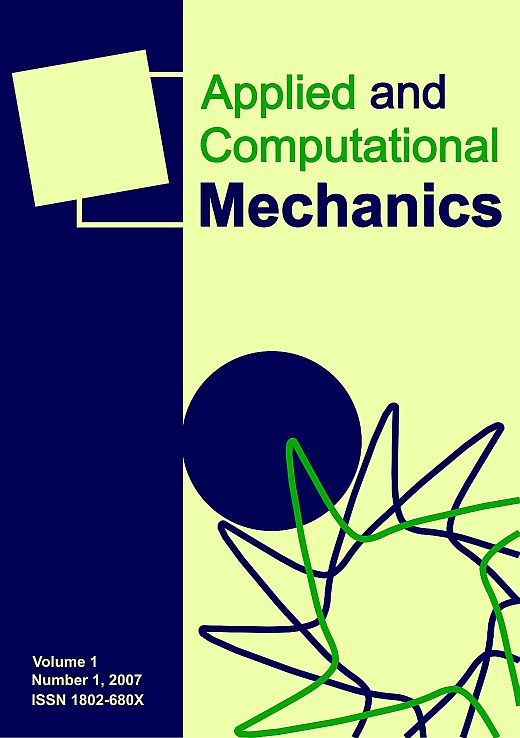Using the Neumann series expansion for assembling Reduced Order Models
Keywords:
Guyan reduction, IRS method, Neumann series, analytical selection of masters, ill-conditioning, human vocal tractAbstract
An efficient method to remove the limitation in selecting the master degrees of freedom in a finite element model by means of a model order reduction is presented. A major difficulty of the Guyan reduction and IRS method (Improved Reduced System) is represented by the need of appropriately select the master and slave degrees of freedom for the rate of convergence to be high. This study approaches the above limitation by using a particular arrangement of the rows and columns of the assembled matrices K and M and employing a combination between the IRS method and a variant of the analytical selection of masters presented in (Shah, V. N., Raymund, M., Analytical selection of masters for the reduced eigenvalue problem, International Journal for Numerical Methods in Engineering 18 (1) 1982) in case first lowest frequencies had to be sought. One of the most significant characteristics of the approach is the use of the Neumann series expansion that motivates this particular arrangement of the matrices’ entries. The method shows a higher rate of convergence when compared to the standard IRS and very accurate results for the lowest reduced frequencies. To show the effectiveness of the proposed method two testing structures and the human vocal tract model employed in (Vampola, T., Horacek, J., Svec, J. G., FE modeling of human vocal tract acoustics. Part I: Prodution of Czech vowels, Acta Acustica United with Acustica 94 (3) 2008) are presented.Downloads
Published
30-Jun-2014
Issue
Section
Articles
License
Copyright (c) 2016 Applied and Computational Mechanics

This work is licensed under a Creative Commons Attribution 4.0 International License.
How to Cite
[1]
S. Nasisi, M. Valášek, and T. Vampola, “Using the Neumann series expansion for assembling Reduced Order Models”, APPL COMPUT MECH, vol. 8, no. 1, Jun. 2014, Accessed: Dec. 11, 2025. [Online]. Available: https://acm.kme.zcu.cz//article/view/246







